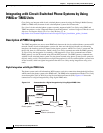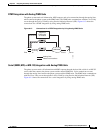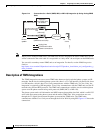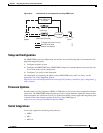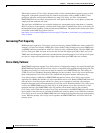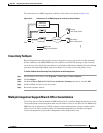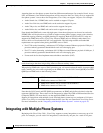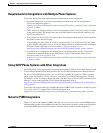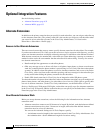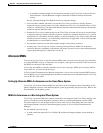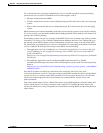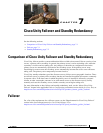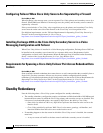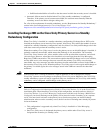
6-32
Design Guide for Cisco Unity Release 5.x
OL-14619-01
Chapter 6 Integrating Cisco Unity with the Phone System
Optional Integration Features
Optional Integration Features
See the following sections:
• Alternate Extensions, page 6-32
• Alternate MWIs, page 6-33
Alternate Extensions
In addition to the primary extension that you specify for each subscriber, you can assign a subscriber up
to nine alternate extensions. (The primary extension is the one that you assign to each subscriber when
you create his or her subscriber account; in the Cisco
Unity Administrator, it is listed on the
Subscribers
> Subscribers > Profile page.)
Reasons to Use Alternate Extensions
There are several reasons that you may want to specify alternate extensions for subscribers. For example,
if you have more than one Cisco
Unity server that accesses a single, corporate-wide directory, you may
want to use alternate extensions to simplify addressing messages to subscribers at the different locations.
With alternate extensions, the number that a subscriber uses when addressing a message to someone at
another location can be the same number that the subscriber dials when calling. You may also want to
use alternate extensions to:
• Handle multiple line appearances on subscriber phones.
• Offer easy message access on direct calls from a cell phone, home phone, or phone at an alternate
work site (assuming that the phone number is passed along to Cisco
Unity from these other phone
systems). In addition, when such phones are used as alternate extensions, and are set to forward to
Cisco
Unity, callers can listen to the subscriber greeting, and leave messages for the subscriber just
as they would when dialing the primary extension for the subscriber.
• Enable URL-based extensions in Cisco Unity for an integration with a SIP phone system.
To reduce the number of requests from subscribers who want alternate extensions set up for multiple cell
phones, home phones, and other phones, give subscribers class of service (COS) rights to specify their
own set of alternate extensions. (In the Cisco
Unity Administrator, see the Subscribers > Class of
Service
> Profile page.) With proper COS rights, a subscriber can specify up to five alternate extensions
in the Cisco
Unity Assistant in addition to the nine that you can specify on the Subscribers > Alternate
Extensions page in the Cisco
Unity Administrator.
How Alternate Extensions Work
Before you set up alternate extensions, review the following list for information on how alternate
extensions work:
• Alternate extensions cannot exceed 30 characters in length. By default, each administrator-defined
alternate extension must be at least 3 characters in length, while subscriber-defined alternate
extensions must be at least 10 characters.
You can use the Advanced Settings tool in Tools Depot to specify:
–
A minimum extension length for the extensions entered in the Cisco Unity Administrator. See
the Administration—Set the Minimum Length for Locations setting.



